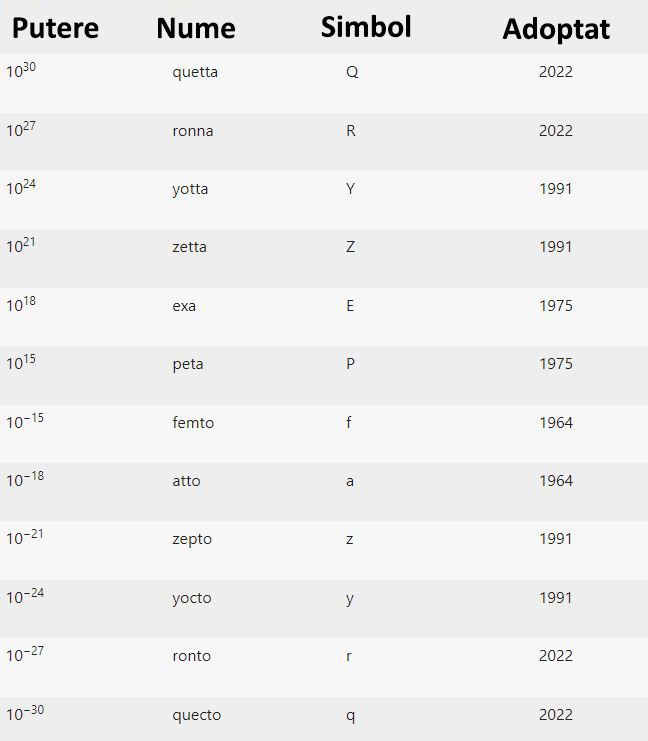
During the 27th General Conference of Weights and Measures (CGPM), organized this year in Paris, between November 15 and 18, it was decided that the International System of Units (SI) will receive new prefixes for units of measurement for the first time. since 1991.
Thus, according to Resolution No. 3, it was decided that SI should receive the following prefixes: ronna(R) for numbers multiples of 10 to the power of 27 (10 followed by 27 zeros) and quetta (Q) for multiples of 10 to the power of 30 ( 10 and 30 zeros). Similarly, prefixes for multiples were also introduced: ronto (r), for 0.000000000000000000000000001 (27 zeros total, 10 to the -27 power) and quecto (q), for 0.000000000000000000000000001 (30 zeros total, 30 power). The expansion took place as a result of the proposal of the main metrological institution of Great Britain (National Physical Laboratory).
Why was this expansion needed? The recently introduced prefixes (zetta, yotta, respectively zepto, yocto) have already started to cause discomfort among some researchers: those working with big data felt the need for prefixes that could express even larger amounts of data, while particle physics would benefit from new prefixes for lobes.
So, from now on we will be able to use terms like ronnabit, kettameter or kectogram. Also at this meeting, it was proposed that the second be redefined in 2030, on the occasion of the next CGPM conference, taking into account the progress made in recent years in improving the accuracy of the measurement of the phenomena used for the previous definition of the second (since 2018).

The International System of Units, introduced in 1960, defines the basic units of measurement (meter, kilogram, second, ampere, kelvin, mole and candle) used in all fields of science and technology, the main advantage of which is connectivity and therefore simplification of both conversion operations between units of measurement derived from the fundamental ones.
Photo source: Dreamstime.com
Ben is a respected technology journalist and author, known for his in-depth coverage of the latest developments and trends in the field. He works as a writer at 247 news reel, where he is a leading voice in the industry, known for his ability to explain complex technical concepts in an accessible way. He is a go-to source for those looking to stay informed about the latest developments in the world of technology.